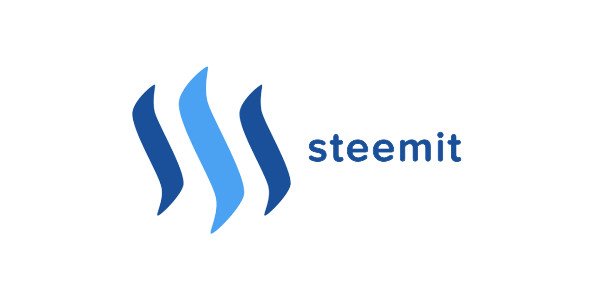You Want to know How does Steeit work?
Within 3 months since its launch, Steem.it has grown as a social publishing platform, a community, and a globally traded currency.But what is it and how does it work?
Role among Cryptocurrencies
Steem.it’s goal was to create a social media platform that rewards its users for the contributions they make, whether content, curating content, or funding. It draws inspiration from Reddit (user-generated content, multi-media, and community voting) but it typically features longer-form content and a complex crypto economy system.The basics of Steem.it are straightforward. Content creators write blogs, post videos, and upload pictures. Other users react by sharing, upvoting, and commenting. This participation is rewarded with a digital currency. Better participation – content, comments, actions that other people react to more – is rewarded with more digital currency. It’s like Reddit, where people get paid.But the mechanics are quite complex. Three kinds of digital assets. Debt-to-ownership ratios. Witnesses. Liquidity providers. Powering up and powering down. There are countless Steem articles either suggesting ways to explain the system or requesting them from others, and new ones appear all the time. This article attempts to summarize, though it will leave some of the technical details for another post.**
Unique Features

To accomplish its goal of a decentralized social media platform that rewards its users, Steem.it has several unique features.Three internal currencies: STEEM, Steem Power, and Steem Dollars
Steem.it uses three currencies to power its network: STEEM, Steem Power, and Steem Dollars,STEEM is the basic currency unit of the Steem ecosystem – everything is valued in STEEM and it must first be acquired to enter or exit the steam network. It is traded on exchanges.In order to be active on the platform, users must convert STEEM to Steem Power. This conversion ‘locks’ their STEEM – it’s not burned, just inaccessible while it’s being used as Steem Power. This is referred to as ‘powering up.’ The rate of conversion changes and can be found here as steem_per_mvest on the right.Users can’t immediately convert Steem Power back to STEEM: they must submit their SP and receive weekly installments of STEEM over two years, similar to bond payments. This is referred to as ‘powering down.’Steem Dollars are another token in the ecosystem. One Steem Dollar is redeemable for $1 worth of Steem at current market prices (.3 STEEM at time of writing). One can convert Steem Dollars to Steem within the Steem platform and then sell the Steem for a fiat currency on an exchange.
The actual trade is delayed by one week: initiating the conversion means the Steem Dollar will become STEEM at the market price in exactly one week.The blockchain issues these currencies in the form of payouts and broader inflation. The total supply of STEEM (including that locked up as Steem Power) doubles every year through reward payments on the platform and as payments to holders of Steem Power (those who have ‘powered up’). 10% of the doubling goes to reward creators and curators; 90% goes to holders of Steem Power in proportion to the amount of Steem Power they inidividually hold. Steem Dollars are also given out as reward payments.Here is a brief primer summarizing key aspects of the currencies.Witnesses as Block Producers
The consensus protocol is also quite complicated. At a high-level, it resembles a delegated proof of stake, with those who hold the most Steem Power electing most of the transaction validators, called Witnesses. Every block, 21 witnesses validate transaction blocks in sequence: a block validated by one witness passes to the next in a pre-determined route through the 21 witnesses. 19 of these witnesses elected, 1 comes from the group of miners who produce the cryptographic hashes for the blockchain, and 1 comes from a pool of Steem Power holders. All witnesses are usually known in advance, because the top 19 shouldn’t change frequently and the miner and SP holder are drawn from a queue. Each validator has three seconds to validate the block, meaning a total block confirmation time of 21 seconds.Rate Setting instead of Transaction FeesInstead of implementing transaction fees for being active on the network, each user is allowed a certain amount of activity on the network, calculated as a portion of the available block size space. Steem calls this bandwidth, and the limit is a moving average of weekly activity. If a user exceeds their limit, their transactions are delayed. Calculating how this translates into an actual number of transactions is complicated, but the point is that one’s allowed free undelayed activity on the network is proportional to their Steem Power holdings.
History/Founding
Steem.it was founded by Dan Larimer and Ned Scott. CTO Dan Larimer co-founded Bitshares and BitUSD. In his Steem.it autobiography, he explained that he founded Steem.it as an economic system and a community that expresses the basic premise “everyone who brings value deserves a share.” CEO Ned Scott met Dan through the Bitshares project, and after meeting in person, they decided to launch a blockchain project focused on community. They developed the business plan in January 2016 and launched the main.net in March 2016. The system issued its first payout on July 4th, 2016.

Welcome Kit | Getting Started with steemit
Best STEEM & STEEMIT Resources & Websites List
http://steemwhales.com/ - ranking of biggest STEEM stakeholders
http://steemstats.com/ - get stats on individuals accounts
http://steempress.io/ - convert steem account into wordpress like blog
http://www.coinmarketcap.com - see value of steem
http://coincap.io/ - alternative to coinmarketcap
http://www.steemimg.com - steem image hosting
http://www.openledger.info - decentralized exchange where you can trade STEEM for other cryptocoins
https://steemit.com/tags.html/trending - trending and best paying tags
https://steemd.com/distribution - number of members on STEEM
http://steemstream.com/ - watch STEEM in live action